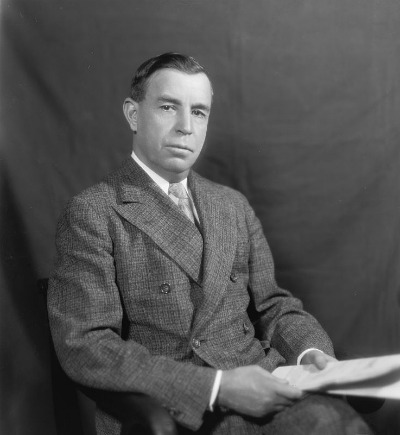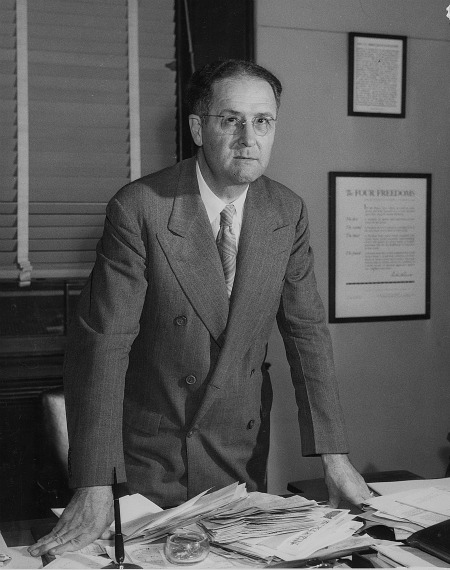1850
A constitutional convention met in Santa Fe and framed a constitution that citizens ratified on June 20. A legislature met on July 1 and elected two U.S. senators. Congress rejected the legislature's petition for statehood in part because of southern members' objection to the anti-slavery provision within the proposed constitution.
1850
Under the provisions of the Compromise of 1850, the U.S. Congress granted New Mexico territorial status. Its quest for statehood would continue for another 62 years, requiring the introduction of more than four dozen authorizing bills. New Mexico was a territory longer than any other of the contiguous territories in the Union. Mining and railroad industries generally opposed statehood, preferring territorial status with its accompanying lack of state taxation.
1851

Richard H. Weightman, a newspaper publisher from Santa Fe, became the first of New Mexico's 17 territorial delegates in the U.S. House of Representatives. In the U.S. Senate, New Mexico's interests were represented by senators from the adjacent states of Texas and Colorado.
1906
The Territory of New Mexico offered to join with the Arizona Territory to seek admission as a single state. Arizona voters rejected this proposal.
1911
New Mexico citizens approved a state constitution, which was considered conservative in its provisions. This balanced the more liberal-oriented constitution that the Arizona Territory adopted that year and ensured that the admission of both territories would be mutually dependent.
1911

Congress approved a resolution providing for statehood for both New Mexico and Arizona. The two states were linked because of expectations that New Mexico's congressional delegation would be Republican and Arizona's Democratic. A provision in the Arizona constitution permitting the recall of judges caused President William Howard Taft to withhold his approval of both states' request for admission. After Arizona removed that provision, Taft gave his approval and both states quickly moved to statehood.
1912
New Mexico was admitted as the 47th state in the Union.
1912

New Mexico's first two senators, Thomas Catron and Albert B. Fall, presented their credentials, took the oath of office, and were seated in the U.S. Senate. They then drew lots to determine their class assignments. Catron drew Class 1, with a term to expire on March 3, 1917. Fall drew Class 2, with a term to expire March 3, 1913.
1912

In a procedure marked by fist fights and highly irregular procedure, the state legislature reelected Albert Fall to a full six-year term. The state's governor refused to sign his credentials. This required another election early the following year, in which the legislature again elected Albert Fall.
1916

Andrieus Aristieus Jones of East Las Vegas became New Mexico's first directly elected senator under the terms of the Seventeenth Amendment to the U.S. Constitution.
1928

Former New Mexico governor Octaviano A. Larrazolo of Santa Fe became the first Hispanic American elected to the Senate. He served the three-month balance of a vacant term and, because of poor health, did not seek reelection.
1931

Senator Sam G. Bratton of Albuquerque delivered George Washington’s Farewell Address to the Senate, a tradition dating to 1862.
1935

Dennis Chavez, the first American-born Hispanic senator, was appointed to the Senate after the death of former senator Bronson M. Cutting and was elected to complete the full term. He remained in the Senate for more than 27 years, until his own death in 1962.
1939

The Hatch Act, sponsored by Senator Carl Hatch of Clovis, became a public law. It prevented federal employees from engaging in political activity.
1945

Representative and future senator Clinton P. Anderson of Albuquerque began service as the secretary of agriculture under President Harry S. Truman, a position he held until 1948. He began his Senate career in 1949 and served for 24 years.
1946

Dennis Chavez delivered George Washington’s Farewell Address to the U.S. Senate, a tradition dating to 1862.
1949

Dennis Chavez became chairman of the Senate Committee on Public Works (now the Committee on Environment and Public Works), serving from 1949 to 1953 and again from 1955 to 1963.
1961

Clinton P. Anderson became chairman of the Committee on Interior and Insular Affairs (now the Committee on Energy and Natural Resources), a position he held until 1965, when he became chairman of the Committee on Aeronautical and Space Sciences (today's Committee on Commerce, Science, and Transportation). He chaired that committee until 1973.
1966

Congress accepted a bronze statue of former senator Dennis Chavez as New Mexico's first contribution to the National Statuary Hall Collection.
1991
In the "Great Americans" stamp series, New Mexico senator Dennis Chavez was featured on one of the stamps, which was valued at 35 cents.
1995

Pete V. Domenici of Alburquerque became chairman of the Senate Committee on the Budget, serving until 2001.
2000
Pete Domenici became New Mexico's longest-serving senator, surpassing the record of 27 years, 6 months, and 8 days set by Dennis Chavez in 1962. Domenici went on to serve in the Senate a total of 36 years.
2001

Jesse Francis (Jeff) Bingaman, Jr., became chairman of the Senate Committee on Energy and Natural Resources, serving until 2003, and again from 2007 to 2013.
2003
Pete Domenici became chairman of the Senate Committee on Energy and Natural Resources, serving until 2007.
2005

Congress accepted a marble statue of 17th-century Native American religious leader Po’pay as New Mexico's second contribution to the National Statuary Hall collection.
2009

Thomas (Tom) Udall received a Golden Gavel Award for presiding over the Senate for 100 hours in a single session. He received a second Golden Gavel on December 22, 2010.